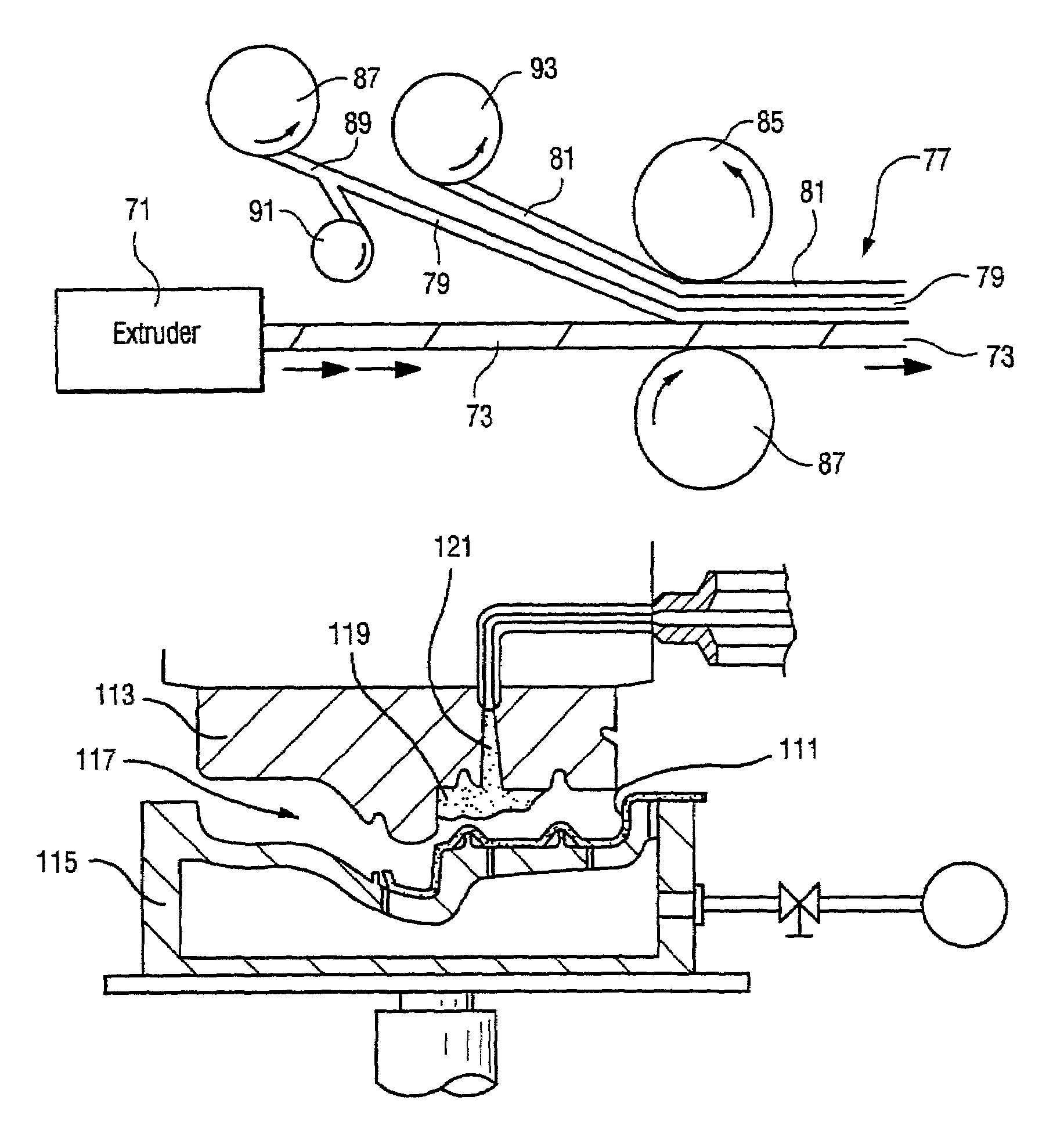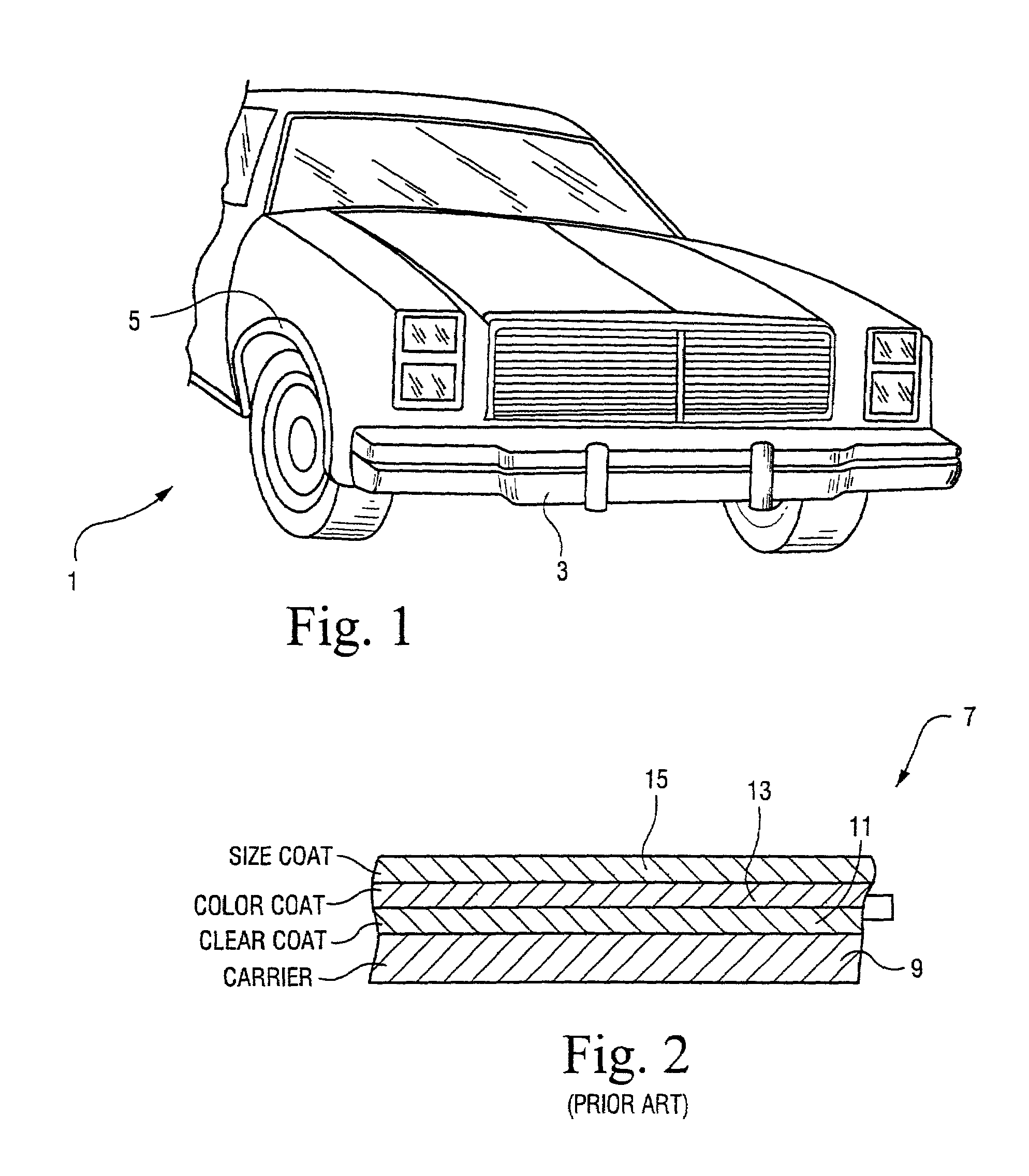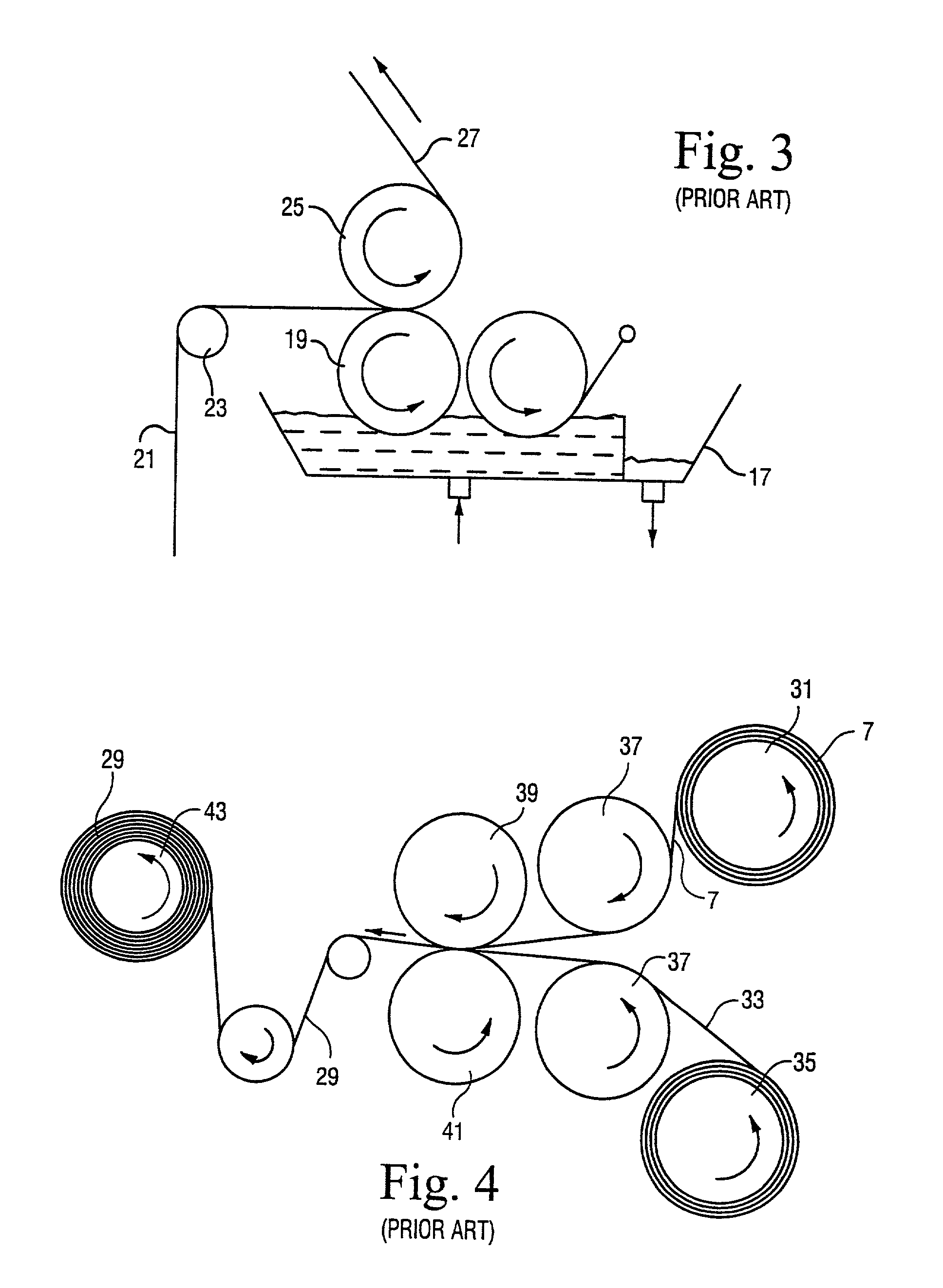Method of making a colored automotive trim product
a technology of automotive trim and color, applied in the direction of turning machines, turning machine accessories, drawing profiling tools, etc., can solve the problems of undesirable spraying, method, and often undesirable spraying of molded components for use on vehicles
- Summary
- Abstract
- Description
- Claims
- Application Information
AI Technical Summary
Benefits of technology
Problems solved by technology
Method used
Image
Examples
Embodiment Construction
[0072]Referring now more particularly to the accompanying drawings in which like reference numerals indicate like parts throughout the several views.
[0073]It should be understood that trim products in accordance with certain embodiments of this invention are adapted to be mounted on exteriors of vehicles such as that illustrated in prior art FIG. 1, as well as all other types of automotive vehicles including sedans, station wagons, sport utility vehicles (SUVs), convertibles, limousines, trucks, and the like. The components are to be provided for exterior appearance purposes so as to either match the color of the corresponding vehicle, or to compliment the color of the corresponding vehicle. Exemplary automotive trim products which may be made in accordance with methods disclosed herein include wheel covers, door sides, bumper fascia, claddings, body side moldings, wheel trim, wheel flares, sill moldings, spoilers, roof moldings, beltline moldings, ditch moldings, bumper covers, win...
PUM
| Property | Measurement | Unit |
|---|---|---|
| thick | aaaaa | aaaaa |
| density | aaaaa | aaaaa |
| thick | aaaaa | aaaaa |
Abstract
Description
Claims
Application Information
 Login to View More
Login to View More - R&D
- Intellectual Property
- Life Sciences
- Materials
- Tech Scout
- Unparalleled Data Quality
- Higher Quality Content
- 60% Fewer Hallucinations
Browse by: Latest US Patents, China's latest patents, Technical Efficacy Thesaurus, Application Domain, Technology Topic, Popular Technical Reports.
© 2025 PatSnap. All rights reserved.Legal|Privacy policy|Modern Slavery Act Transparency Statement|Sitemap|About US| Contact US: help@patsnap.com



